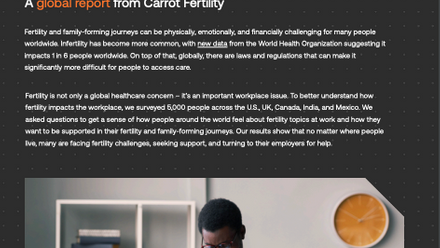Ways to improve efficiency and effectiveness using a global benefits audit

Benefit spend is on the increase, and this, coupled with external pressures from employee expectations, employment market dynamics and global medical inflation, is driving employers to consider an audit of their global benefits strategy.
The current climate represents an opportunity for companies to undertake a root and branch review of the global benefit portfolio at a strategic and operational level.
However, such an undertaking isn’t always straightforward nor swift.
Companies need to develop a robust understanding of their strengths, shortcomings, priorities and future direction in order to achieve maximum efficiency and effectiveness from their strategy.
Here, we outline the key areas and questions to consider when conducting an audit of an existing benefits strategy.
- Compliance
Employment and benefits legislation is constantly evolving, and progressive employers will have their finger firmly on the pulse when it comes to legislative change; employer obligations can be onerous and the costs of making mistakes are significant.
When it comes to the question of compliance, employers should consider the following:
- Do historical arrangements and policies still comply with in-country legislation?
- Have your geographies changed?
- Are there anticipated changes in legislation which may impact your benefits portfolio or employment terms and conditions?
2. Competitiveness
Benefits are integral to job choice, with nine in ten UK workers claiming benefit provision is important in their decision to work for a company, according to Willis Towers Watson’s (WTW) Health and Benefits Barometer.
Benchmarking is therefore an important element and companies should ask themselves the following questions:
- Who are our competitors, globally, regionally or in country?
- Do we benchmark reward holistically, or compensation to X% and Benefits to Y%?
- How does our benefits offering compare to the most progressive employers?
3. Cost Management
Benefit costs are on the rise, thanks in part to sustained rises in medical inflation and compounded by an overreliance on pharmacy services, overuse of services, high cost of new medical technologies and increasing prevalence of claimable conditions.
It is therefore unsurprising that cost management and managing financial risk exposures were identified as the top two areas of focus in WTW’s Current and Emerging Global Benefit Themes research.
With so much economic uncertainty, this is set to become even more of a priority, so companies should consider the following cost management questions:
- Does our global/regional/local benefit design expose us to avoidable risks?
- What are the low impact/high return steps that can be taken to manage benefit costs?
- How effectively are we using multinational pooling, global underwriting or captives?
4. Consolidation & Consistency
Economies of scale can still be achieved by employers with low overseas head-counts but centralised buying of benefits and insurance isn’t always a feasible option. Employers need to decide if they wish to take a centralised or localised approach to benefits design and implementation, which will be largely dependent upon the desired level of governance and control.
Companies can identify opportunities to transform global benefits delivery by asking the following:
- What opportunities exist to simplify and consolidate the benefit design, providers, and processes?
- How does the reward and benefits offering support the employer brand and value proposition?
- Are the eligibility rules consistently applied from country to country and is the offering fair and equitable to employees?
Although these questions give some direction, companies will be all too aware that conducting an audit is much more than a tick-box exercise and the process comes with an array of challenges.
However, good practice can help overcome some of these.
It is advisable that companies obtain accurate data from in-country colleagues, vendors, insurers and brokers to build a repository, including plan documents, renewal dates, premiums, and commissions.
Relying solely on one source for their benefits’ repository should be avoided, as HR handbooks may determine the rules but not reflect common practice. As previously mentioned, legislation is constantly evolving so policy documents can quickly become outdated and redundant.
Being transparent and having a clear outline of what the employer is trying to achieve will help with stakeholder buy-in and gaining sponsorship from a senior leader outside of reward or HR will help provide an alternative – and valuable – perspective and counsel.
Timings are also imperative. Well-considered audits can take between six and nine months so ensure that realistic deadlines for the project are set, and also capture key dates and rules that may prevent changes being made at key points of the year.
Finally, companies are advised not to go it alone. The audit could identify gaps in knowledge or areas of improvement that require specialist guidance and advice from external experts.
A wealth of resources and advice is also available from REBA members, professional services businesses and global mobility professionals which can help companies gain a greater understanding of trends, legislation and common practice.
The author is James Spencer, director at Willis Towers Watson Health and Benefits.
This article is provided by Willis Towers Watson.
In partnership with WTW
WTW is a leading global advisory, broking and solutions company.







